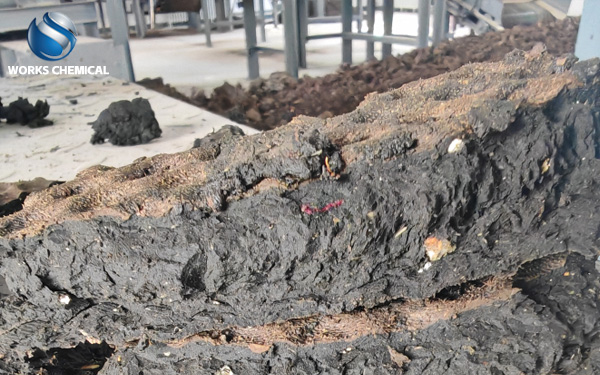
In the field of sewage treatment, sludge treatment is one of the core links, and the selection of sludge conditioning agents is directly related to the dewatering efficiency, treatment cost and environmental benefits. Sludge enhancer, as a new generation of sludge conditioning technology product, is becoming the focus of industry attention due to its unique formula and remarkable application effect. The following decrypts this innovative agent from four aspects: technical principle, core advantages, application scenarios and industry value.

I. Technical Principle: Cracking the "Triple Code" of Sludge Conditioning
The core objective of sludge conditioning is to destroy the colloidal structure of sludge through physical, chemical or biological means, release bound water and enhance dewatering performance. Sludge enhancers achieve efficient conditioning through a "triple mechanism of action" :
Charge neutralization and bridging adsorption
The high-molecular polymers in the agent (such as modified polyacrylamide) neutralize the negative charges on the surface of sludge particles through positive charges, weakening the repulsive force between particles. At the same time, they form "Bridges" through long-chain structures, promoting the rapid flocculation of sludge particles into large particles.
Cell wall breaking and the release of bound water
The surfactants in the sludge enhancer work in synergy with enzyme preparations to destroy the cell membrane structure and release intracellular water, thereby significantly reducing the specific resistance (SRF) of the sludge, which is bound to the cell walls of microorganisms in the activated sludge.
Skeleton construction and pore optimization
By introducing inorganic framework materials (such as modified diatomite), a rigid support structure is formed in the sludge to prevent the filter cake from clogging during the dewatering process and enhance the permeability of the filtrate.
Ii. Core Advantages: Solving the "Four Major Pain Points" of Traditional Pharmaceuticals
Compared with traditional sludge conditioning agents (such as iron salts and lime), sludge efficiency enhancers have achieved four major breakthroughs:
The pain point is that traditional pharmaceuticals are limited to the solution of enhancers
The dosage of the agent is large and requires excessive addition. The cost is high. For high-efficiency compound formulas, the dosage can be reduced by 30% to 50%
The dewatering efficiency is low and the sludge specific resistance is high. The specific resistance of the turbid sludge in the filtrate is reduced by more than 60%, and the SS of the filtrate is less than 50mg/L
The equipment is highly corrosive. Iron salts and aluminum salts can corrode pipelines. Weakly acidic formula, with a PH applicable range of 5 to 9
Sludge disposal is restricted. Sludge containing iron and aluminum requires special treatment. The calorific value of sludge can be increased by 15%, making it easier to incinerate/compost
Iii. Application Scenarios: Covering the entire process of sludge treatment
Sludge enhancer is applicable to various types of sludge and treatment processes:
Municipal sewage treatment
Activated sludge: The moisture content has been reduced from 99% to below 60%, and the dewatering efficiency has increased by 40%
Primary sedimentation sludge: Directly concentrated to a moisture content of less than 95%, reducing the volume of the thickening tank
Industrial wastewater treatment
Papermaking sludge: Solving the problem of fiber entanglement, the plate and frame filter press cycle is shortened by 50%
Printing and dyeing sludge: The decolorization rate is increased by 70%, and the solidification rate of heavy metals reaches 95%
Emergency response scenario
Sudden sludge bulking: Quickly restore sedimentation performance and prevent system failure
Sludge reduction: Reduce the weight of sludge per unit volume by 40% to lower transportation costs
Iv. Industry Value: Facilitating the "dual carbon" Goals and circular economy
Energy conservation and carbon reduction
The energy consumption for dewatering can be reduced by 25%, and about 1.2 tons of CO₂ emissions per 10,000 tons of sludge can be reduced annually (taking plate and frame filter press as an example).
Breakthrough in resource utilization
The calorific value of sludge has been raised to over 12MJ/kg, and it can be directly co-burned for power generation, replacing part of the coal.
Policy adaptation
It complies with standards such as "Sludge Quality for Mixed Landfill of Sludge Disposal in Municipal Sewage Treatment Plants" (GB/T 23485), and helps to achieve the standard of sludge disposal rate.
Conclusion: The "New Paradigm" of Sludge Conditioning Technology
The emergence of sludge enhancers marks a leap in sludge conditioning from "single agents" to "systematic solutions". Through precise molecular design, integration of complex functions and full-process optimization, it not only addresses the pain points of traditional chemicals, but also promotes the in-depth transformation of sludge treatment towards "reduction, harmlessness and resource utilization". With the tightening of environmental protection standards and the increasing pressure to reduce carbon emissions, such innovative chemicals will become a key driver for improving the quality and efficiency of sewage treatment plants.